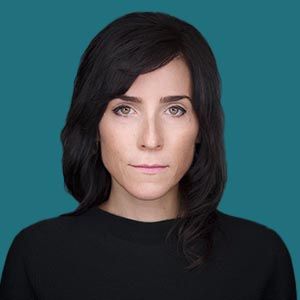Stem Cell Prime Editing May Provide Novel Treatment Approach for p47phox Chronic Granulomatous Disease
Jennifer Gori, PhD, vice president of research at Prime Medicine, discussed what distinguishes prime editing from other forms of gene editing.
Jennifer Gori, PhD

Chronic granulomatous disease (CGD) is a rare inherited disorder that typically results in immunodeficiency and chronic inflammatory conditions in patients as a result of their phagocytic myeloid cells having insufficient nicotinamide adenine dinucleotide phosphate (NADPH) oxidase activity.1 The current standard of care for CGD is allogeneic hematopoietic stem cell transplant from a matched donor (allo-HSCT). Although allo-HSCT is a disease-modifying treatment, access to matched donors is limited and the procedure can lead to complications; as such, there is a need for new treatments.
At the American Society of Gene and Cell Therapy (ASGCT) 2023 Annual Meeting, held May 16-20, in Los Angeles, California, Jennifer Gori, PhD, vice president of research at Prime Medicine, gave a talk regarding preclinical research on a novel treatment method for the most common autosomal recessive form of CGD, p47phox CGD. The approach involves autologous transplant of CD34+ cells that have been modified with prime editing to correct for a 2 nucleotide GT deletion in exon 2 of NCF1, the disease-targeted gene in p47phox CGD.
In an interview with CGTLive™ at the conference, Gori discussed the results of the preclinical research and the decision to use PRIME editing over other gene editing approaches. She noted that over 92% editing was observed in long-term hematopoietic stem cells.
CGTLive: What is the aim of Prime Medicine’s research?
Jennifer Gori, PhD: At Prime Medicine we're targeting an autosomal recessive form of CGD. Patients with this disease have an inability to fight infection so they have a compromised immune system. Our goal is to target a common mutation in the NCF1 gene. When we correct the mutation by prime editing, we should be able to restore the innate immune response to pathogens thus providing a treatment for patients.
What were the key results and takeaways of the new research?
We presented for the first time over 92% editing in long-term hematopoietic stem cells, which are the critical cells you want to correct when you're doing a bone marrow transplant. We've also shown that when we correct patient CD34+ cells, which are the population containing the stem cells, we’re able to restore the protein expression and activity in the myeloid progeny of these cells. It's very exciting.
I think prime editing has been a wonderful advance for the field. Other gene editing technologies, including Cas9 nuclease, may create a double-strand break, which can lead to potential off-target risks or imprecise edits. Prime editing does not create a double-strand break, and it's very precise. As a tool, it can be used to very elegantly repair any mutation in the genome. Certainly, with this program, we see very high correction—over 90% across multiple stem cell donors—and we see no off-target edits and no unintended edits at the target site. For us, this is a great demonstration of how you can use prime editing to very precisely correct a mutation with high specificity. I think prime editing will be able to be applied across multiple diseases in the future.
Have you identified any areas of interest for future research?
I think an area of interest for future research would be how to target more difficult mutations or situations where there's a lot of heterogeneity in mutations in a gene that causes the disease. We've developed a system that we call Prime Assisted Site Specific Integrase Gene Editing (PASSIGE). This allows you to insert an entire genetic cargo into a target site. When this is applied more broadly, it's going to be able to provide a single treatment at a gene for all patients, regardless of their mutation. It's a really exciting advance, I think, that's going to come in the future.
Is there anything else you’d like to share with the audience?
I think prime editing has a lot of opportunities. I think it can be applied more broadly, even beyond inherited disease to things like cancer. In my perspective, collaboration between clinicians, patient advocacy groups, companies, and academic labs is really important to advance these therapies. The second element that I think is really important to enable us to deliver these treatments to patients is education: educating not only the general public of how these tools work, but also having very clear and interactive conversations with clinicians and with patient advocacy groups to really help them understand our interest is really to treat the patients.
Transcript edited for clarity.
Click here for more coverage of ASGCT 2023.